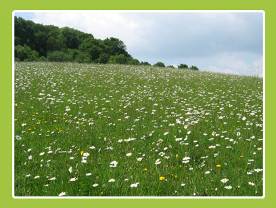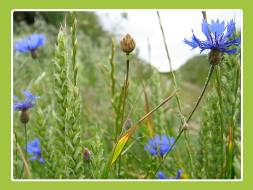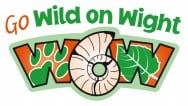BIODIVERSITY ACTION PLANS |   |
Following the Rio de Janeiro Earth Summit in 1992, each country is in the process of developing a national Biodiversity Action Plan. The England Biodiversity Strategy was launched in 2002. At the local level, individuals and communities are working out these principles and projects for the benefit of habitats and species in their immediate environment. The production of a Biodiversity Action Plan is part of local Agenda 21, a process which aims to involve people in deciding the priorities for the long-term health and well-being of their communities.
| The first stage of the process was to produce an audit of the Island’s biodiversity, to take stock of our present knowledge of the Island’s habitats and species, based upon information supplied by local and national experts and organisations. It was designed to be a springboard for the conservation of our biodiversity by providing an objective factual basis from which to consider priorities for taking forward the conservation of our wildlife and their habitats. The audit ‘Wildlife of the Isle of Wight ‘ was published in July 2000. |
The Isle of Wight is a microcosm of south-east England and has, size for size, its fair share of the habitats characteristic of the region. In fact, we are unusually rich in species and habitats compared to other similar areas on the mainland.
| The chalk grasslands, the maritime cliffs and slopes, and the estuaries are particularly important, not only in a regional context but also on a national and international scale. The mere fact that we are an island located off the south coast has consequences for the wildlife as well as for the human population. |  |
We do not have introduced species such as grey squirrels, deer or mink; this allows populations of native animals which have become rare on the mainland, such as red squirrels, dormice and water voles to flourish. Our mild climate and maritime situation provides a foothold for species such as the Glanville fritillary butterfly, on the northern edge of their European range.
Much of the Island is covered by nature conservation and other designations. About half of the Island has Area of Outstanding Natural Beauty status, in recognition of its landscape value. 11% of the land area is designated as Sites of Special Scientific Interest and much of this, particularly around the coastline, is also considered to be of international importance. A further 10% has been identified locally as having value as Sites of Importance for Nature Conservation.
 | Many species of conservation concern which have been identified at the national level occur on the Island. The Island has 29 of those which are regarded as national priorities; they include the dormouse, song thrush, red squirrel, water vole, early gentian, skylark and starlet sea anemone. |
| A further 205 species are also seen as important on the national scale - butterflies such as the Adonis blue and Pearl-bordered fritillary; marine life such as the native oyster and dogwhelk; freshwater fish such bullhead and brook lamprey; wild flowers such as the cornflower and field cow-wheat; birds such as the barn owl and nightjar; and the many species of bats. |  |
In addition, another 457 species, which are locally distinctive, have been identified by local experts and enthusiasts. They include a diverse range of species such as mantis shrimps, wasp spiders, wall lizards and pink wax-cap fungi.
There have been many changes in the countryside and the wildlife it supports throughout history. As a consequence of human activities, chalk grassland on the Isle of Wight has declined in area by two-thirds since 1850, and even greater losses have occurred to heathland habitats. In more recent times, there have been increasing pressures relating to built development, whether for housing, roads or industry. Agricultural practice, driven by Government policy, has changed dramatically over the last 50 years and has resulted in change to our countryside. An estimated 72 species are considered to have become extinct locally within the last fifty years and very many more are in decline. These losses are largely due to habitat change or loss.
Action plans have been developed by members of the Island’s Biodiversity Action Plan Partnership, aimed at producing effective action to safeguard viable populations of species, and to conserve their habitats. A vital component of these action plans is to raise public awareness of the issues, to inform and educate both Island residents and visitors about the precious and fragile environment in which we all live. If we are to enjoy and appreciate the wonders of the natural world, then we must recognise our responsibilities and play our part in protecting it.
Page last updated on: 27/05/2009







